A reserve for modernization built into a tank's design is one of its most important features, especially in wartime. In this respect, the American Medium Tank M4 is an outstanding example. Thanks to its 1750 mm wide turret ring, it could receive a much larger turret than the one used initially. During production, the tank's protection from the front was improved. Finally, the suspension of the M4 could be improved significantly without changing the rest of the vehicle. The M4A1, M4A2, and M4A3 were major steps for this project. Today let us talk about the peak of evolution for the M4A2 family: the M4A2E8. Although it came late, it managed to make it in time to see battle in the Red Army.
From vertical springs to horizontal
The issue of modernizing the suspension of the Medium Tank M4 came up in 1942. The tank had grown to over twice the weight of the Medium Tank T5: the first Medium Tanks M4 had a mass of 30.3 tons. Of course, the suspension was reinforced, but it did not radically change since 1937. As the load on it grew, reliability dropped.
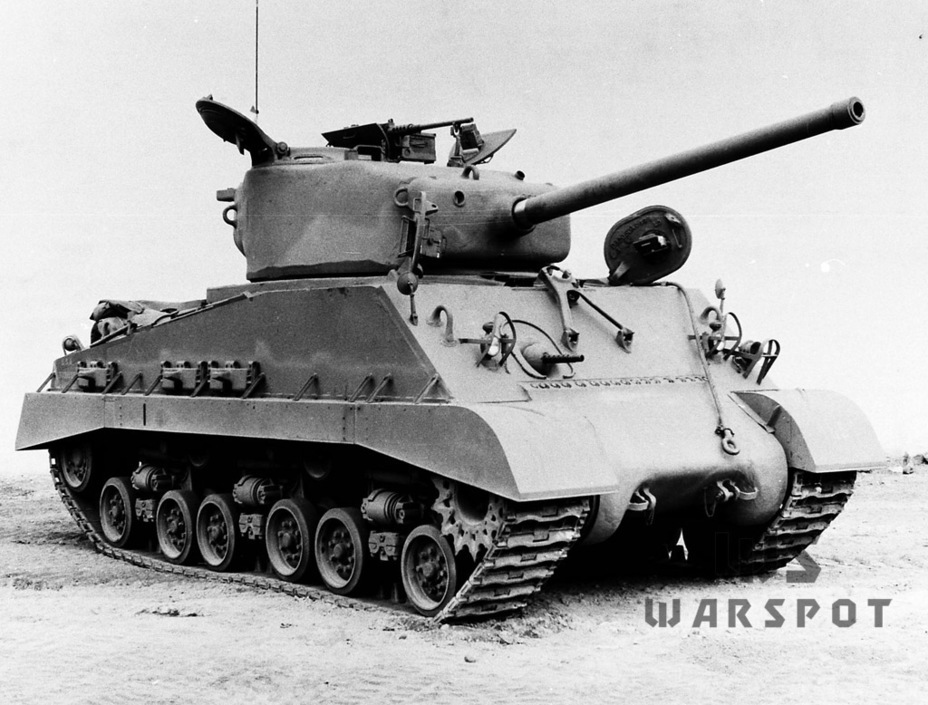
Harry Knox's suspension turned out to be phenomenally robust. It survived a leap from 17.3 tons (Medium Tank M2) to 33.3 tons (Medium Tank M4A2(76)W) without serious changes. However, experience in the Red Army with the M4A2(76)W showed that the reliability of the suspension was decreasing. Primarily, this was noticeable in the road wheels, which had their rubber rims fall apart after 1300 km of driving.
Various variant of modernizing the suspension were considered. A coil spring suspension similar to the one used on the Medium Tank T4 was proposed. In 1944, a torsion bar suspension was tried out. The most promising was the suspension with horizontal volute springs (HVSS). Knox had been promoting it since 1942.
The HVSS suspension was similar to what was used on the Renault R 35 and Hotchkiss H 35 tanks. The first instances of it appeared on American High Speed Tractors M4, M5, and M6 in 1942. In the spring of 1943, an improved version was introduced, where the volute spring was joined by a telescoping shock absorber. This design was tested on a number of tanks: M4A3, M4A4, T20, T22, and T22E1. Finally, the HVSS suspension was approved for use in the M4 family of tanks. However, the M4A4 did not receive it: its production run ended before HVSS was introduced into production.
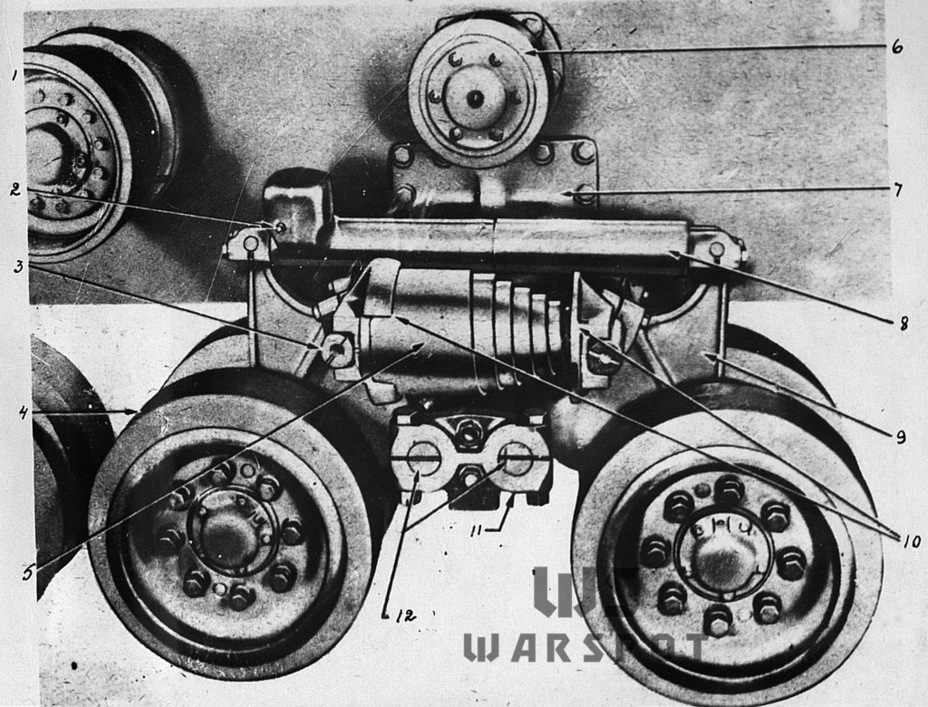
The replacement suspension was most in demand for tanks with T23 turrets and 76 mm guns. Their mass rose to 33 tons, which had an impact on reliability and off-road performance. In addition to a new suspension, the tank received 584 mm wide T66 tracks, which noticeably reduced ground pressure. The variant of the tank with a wet ammo rack, T23 turret, 76 mm gun, and new suspension became known as the E8, also named «Easy Eight» by the American troops. The M4A3E8 went into production first. It started appearing on the front lines in early 1945. Later, in the spring of 1945, the M4A1E8 joined it, catching the very end of the fighting in Europe. T80 tracks, the same ones as used by the Heavy Tank T26E3, were also introduced around then. That tank also used the same engine as the M4A3E8.
The M4A3 tank family remained with the American army for the greatest length of time. The Americans tried to dispose of all other versions. However, the M4A2E8 was never considered for the US Army. These tanks were also not interesting to the British, who were armed with the M4A4. Tanks built from May 1944 to May 1945 (2915 M4A2(76)W, 2894 M4A2E8 tanks built by Fisher Tank Arsenal and 21 M4A2E8 by the Pressed Steel Tank Company) were meant for the USSR.
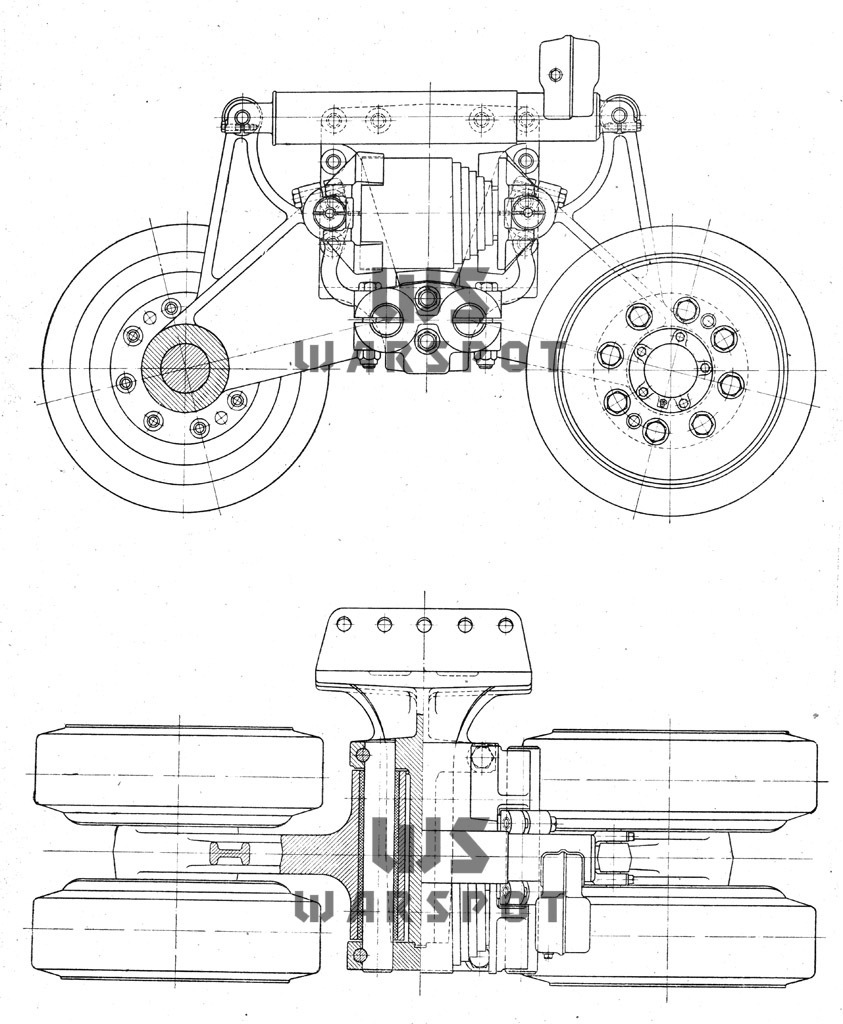
Information on the M4A2E8 first reached the Soviet military in mid-February of 1945. Information bulletin TB 9-1750K-2 was received from the American War Department, which described the new suspension. More detailed information about the «M2A2 horizontal tank suspension» became available on March 13th, 1945. The report was composed by the chief of the tank department of the Soviet purchasing commission (SPKZ) in the USA, Lieutenant Colonel Pulnikov. According to this document, one of the reasons for the appearance of the HVSS suspension was numerous complaints from America's allies. Pulnikov drew attention to the fact that the USSR had also complained about the VVSS suspension many times.
According to Pulnikov, T66 tracks were used from January to March of 1945. In March, T80 tracks came into use.
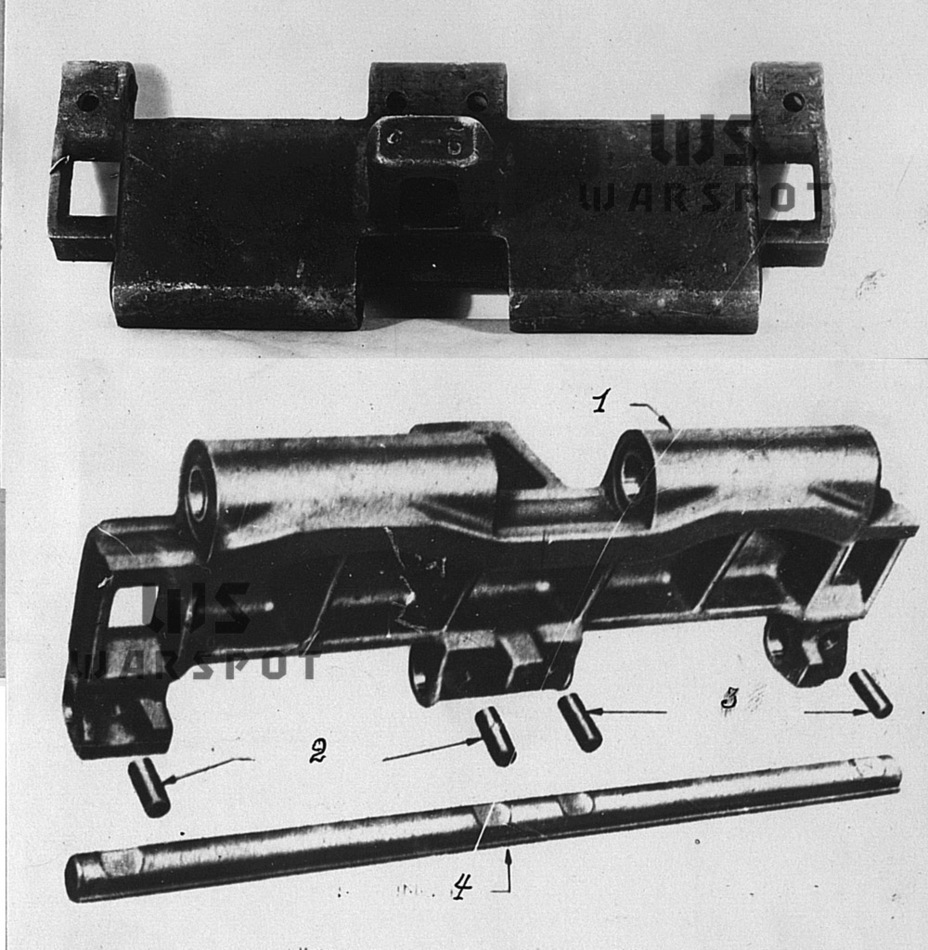
Pulnikov's report had room for a description of a rather obscure detail of the suspension's design. It used three types of bogeys: 7067329 (left front and right rear), 7067330 (right front and left rear), and 706331 (center on both sides). The difference was in the location of the pad limiting the motion of the suspension arm. According the the data of the American Tank-automotive Center, the lifespan of the road wheels was 6400 km, the return rollers 8000 km, the idlers 6400 km, and the shock absorbers 2400 km. The Americans also tested the T88 track, which the M4 received after the war. It was even more reliable: its lifespan was 6800 km.
Pulnikov mentioned other changes of the M4A2E8. From March of 1945 (tank #64741) the bomb thrower was no longer installed in the turret roof, and starting with tank #64724 there was a dust cover installed on the gun mantlet.
A clear plus
The first M4A2E8 arrived in the USSR in March of 1945. These vehicles arrived with convoy JW-65. SS Thomas Donaldson, from which several M4A2(76)W tanks were recently recovered, was a part of it too. Overall, JW-65 brought 34 M4A2E8 tanks, almost all of which were sent to the Gorkiy AFV center. Tank with the registration number USA 30122430, which arrived in Murmansk on March 21st aboard the Liberty ship Eleazar Lord, was sent to the NIBT proving grounds at Kubinka on March 25th. On April 3rd, the trials program for the «M4A2-76 mm with a modernized suspension» was approved. The tank would travel for 1000 km, 350 of which would be on cobblestone and gravel highways, 400 on dirt and country roads, and 200 off-road. 50 km were left for special trials.
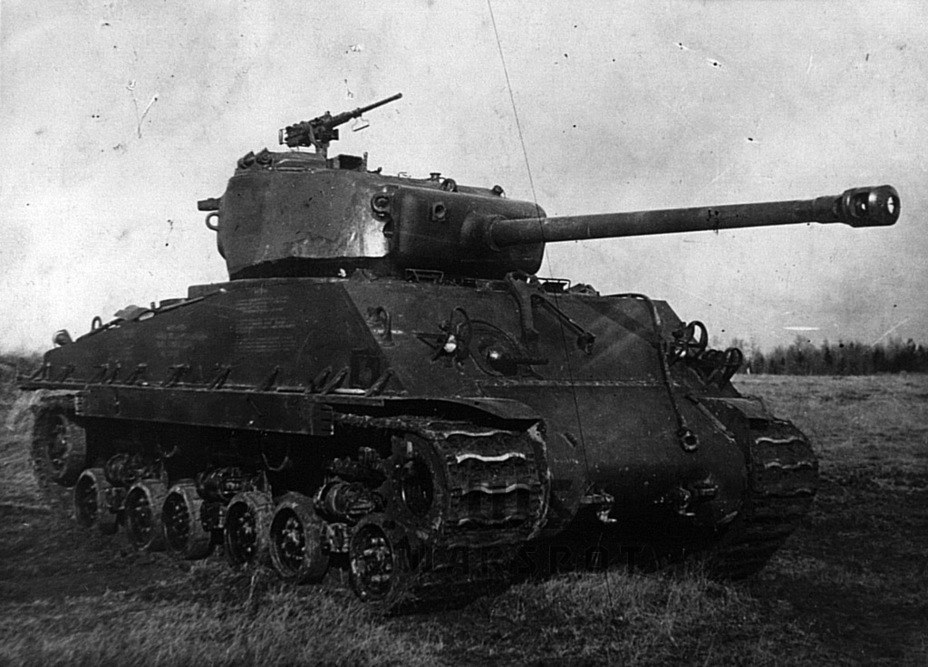
The tank that arrived at the NIBT proving grounds was a typical M4A2E8. As late M4A2(76)W, this tank had a new loader's hatch (smaller oval shape). The Browning M2HB machinegun used to be installed on the loader's hatch, now there was a special pintle mount on the back of the turret, as uncomfortable as it was. The tank was armed with the M1A2 cannon, which had a two-chamber muzzle brake, unlike the M1A1C. The installation of a muzzle brake caused the need for a counterweight on the gun's recoil guard. The commander's turret traverse controls also changed.
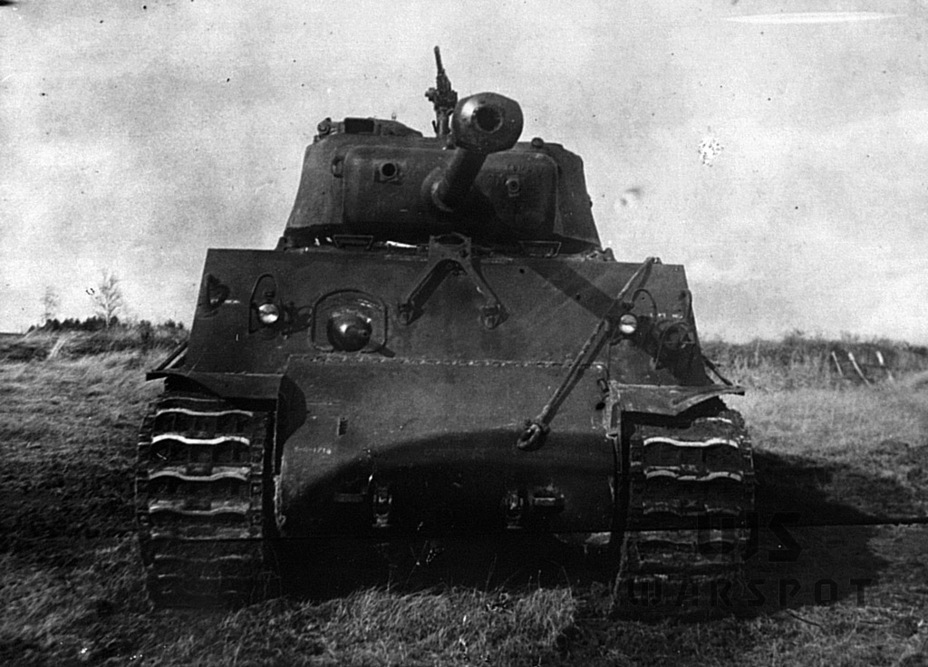
The suspension was the cause for greatest interest. Its description took up a fifth of the length of the report. The use of 6 double road wheels per side increased the surface area, and reduced the load on each wheel. Soviet testers also approved of the horizontal position of the springs. This solution reduced the size of the bogey and made travel smoother. The addition of telescoping shock absorbers was a big plus.
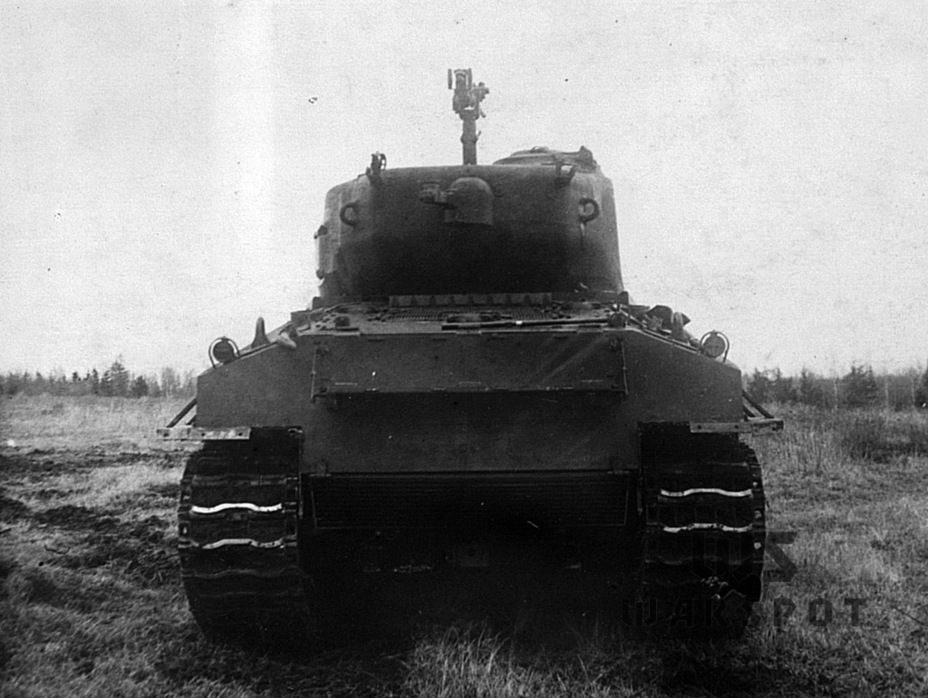
Instead of 3 return rollers per side, tanks with the new suspension had 5: 2 big ones and 3 smaller ones. Idlers were similar in shape to the road wheels, but larger. The track links changed radically from the ones first promoted by Harry Knox 10 years prior. In addition to its design changes, the track links were much wider. This allowed the ground pressure to be reduced from 0.98 to 0.714 kg/cm². However, old track links were very easy to connect and disconnect, while the new ones were not so great in this regard. The drive sprockets also changed: the wider tracks meant they had to be wider as well.
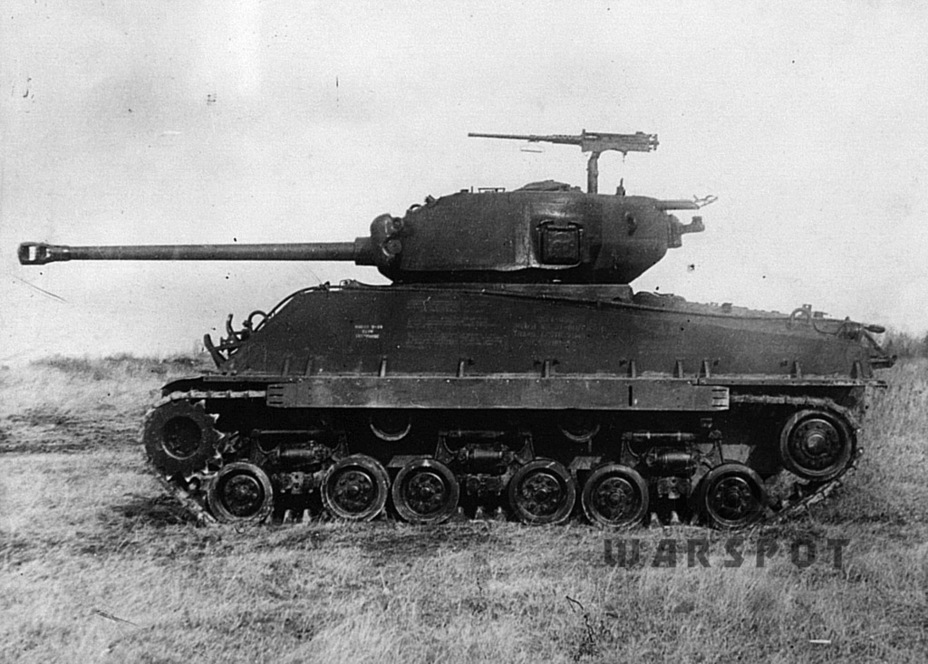
The testers were most interested to see how the M4A2E8 handles dirt roads in the conditions of spring mud. The tank's average speed dropped: the M4A2(76)W's average movement speed was 19.8 kph and technical speed was 19.2 kph, but the M4A2E8's speed was 18 and 17.4 kph respectively. This was not a surprise: in addition to the greater mass, the rolling resistance of the tracks was higher.
The situation with fuel expenditure was the opposite. The M4A2E8 consumed 370 L over 100 km of driving, while the M4A2(76)W expended 410 L. The improved traction of the tracks was to thank. The tanks were driven through very difficult terrain, however, and fuel consumption was higher than what was given in the manufacturer's specifications. Even in these conditions, the range of the tanks with the new suspension increased from 135 to 150 km.
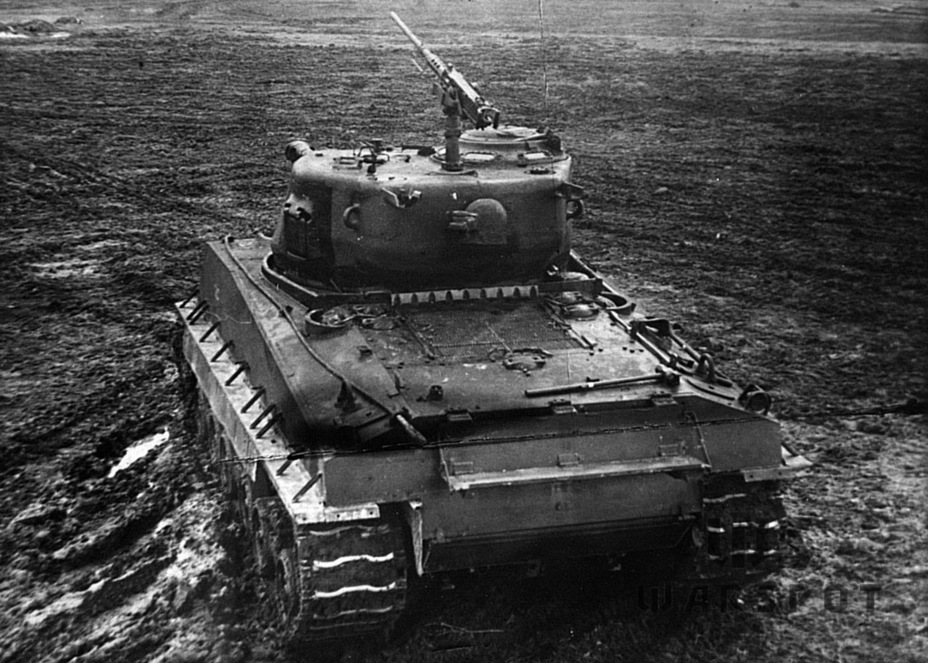
Wider tracks with better traction also improved the tank's performance. Thanks to the new suspension, the driver didn't have to reduce speed in places where the VVSS would not absorb shocks as well. This also improved matters. The tanks' ability to tow other vehicles turned out to be identical.
The tank with an old suspension took the lead in good road conditions. The M4A2(76)W also had a better turning radius and 0-30 acceleration distance (by 3 meters).
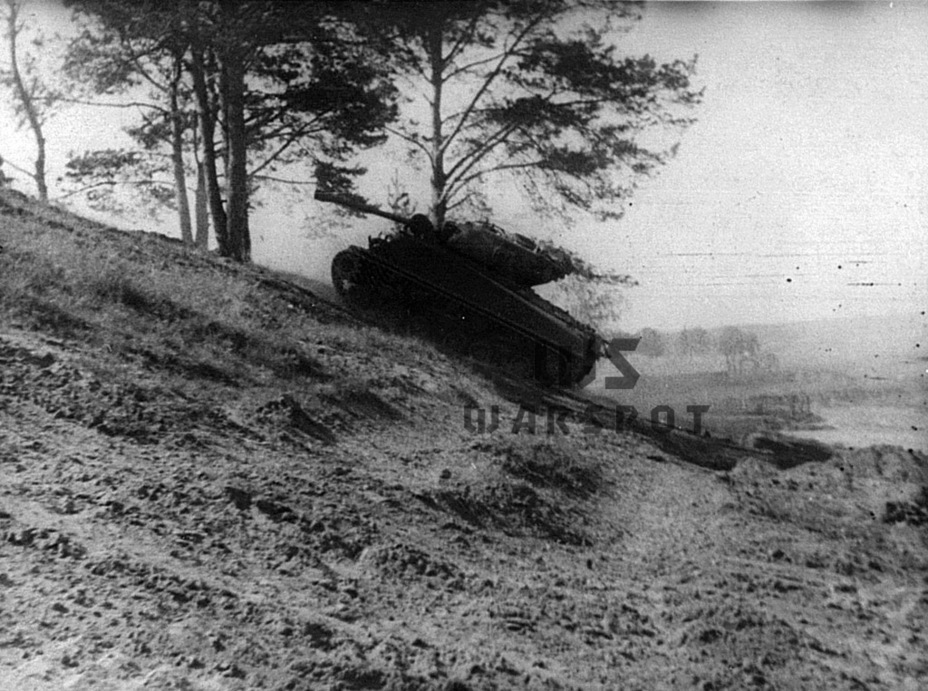
The M4A2E8 took a confident lead on slopes and grades. The maximum grade for the M4A2(76)W was 26 degrees, after which it did not have enough traction. The M4A2E8 managed to climb a 29.8 degree slope, but the engine was not powerful enough to overcome a steeper one. The M4A2E8's maximum tilt was 30 degrees. Its predecessor's performance was 2 degrees poorer.
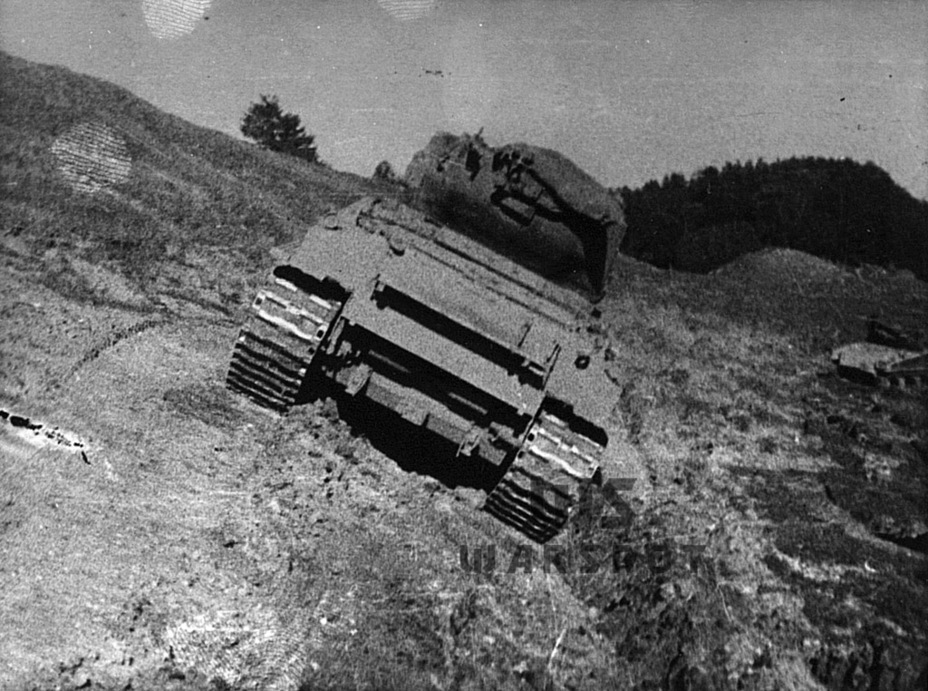
Engine and gearbox breakdowns were recorded during the trials, consequences of low quality assembly. However, neither the M4A2(76)W nor the M4A2E8 showed suspension defects. The reliability of the running gear increased, which was the goal of the HVSS modernization. The wear after 1064 km of trials was negligible. The tank was suitable for subsequent use.
The verdict regarding the M4A2E8 was positive. One drawback was that the process of connecting and disconnecting the tracks was made more difficult. The Americans took note of this drawback: ease of service was the cause for the appearance of the T80 and later T84 tracks.
Dusk of war
The M4A2E8 began arriving in Red Army training units in April of 1945. In both April and May the USSR received both vehicles with the new suspension and M4A2(76)W tanks. On May 25th, 1945, the Gorkiy AFV Center reported that it had 177 tanks of both types, and this number grew to 212 by June 5th. In April of 1945, the USSR had received 181 tanks and in May 128 tanks. The last M4A2 arrived in June of 1945. In total, the USSR received 1088 M4A2(76)W and M4A2E8 tanks in 1945. No difference was recorded between the American tanks, which makes it difficult to calculate the precise amount of M4A2E8 tanks received. It was likely around 350 units. In total, of 4102 M4A2 tanks sent to the USSR 3938 reached their destination.
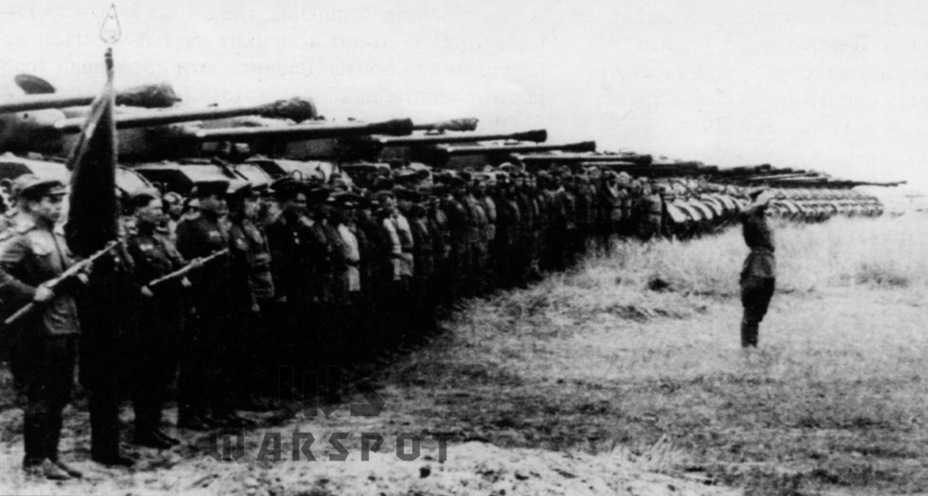
A significant scandal broke out in May of 1945 around the arriving tanks. The cause was their quality, specifically the suspension. The track links came from three batches, one of which (marked D 80073 CC) had many defective ones. This was first discovered in the 16th Independent Training Regiment. An inspection, including trials of tank USA 30122505, confirmed that there were issues with these links. An order was given to replace tracks on all 177 tanks that had arrived by that time. Primarily, the goal was to pick apart tracks and replace the ones from the defective batch. This delayed the arrival of the 33 tanks that came with JW-65 on the front lines.
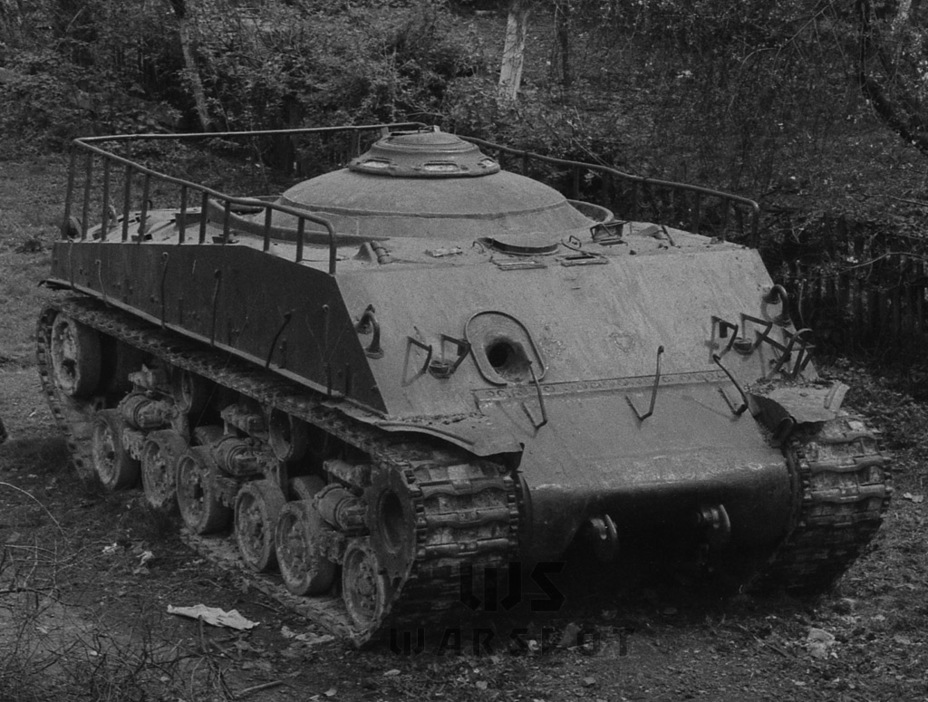
Issues with road wheels tied to manufacturing defects were discovered in June-July of 1945. The 201st Tank Brigade had 44 M4A2E8 tanks with wheel issues. Another 42 such tanks were counted in the 9th Guards Mechanized Corps. There were even more M4A2(76)W tanks with these problems: 48. In total, 299 road wheels on both types of tank needed replacements.
The 9th Guards Mechanized Corps had 84 M4A2E8 tanks by July 23rd. These tanks were the only ones of their kind that the Red Army used for their primary purpose, although this was already during the fighting against Japan. The 201st Tank Brigade's participation was only on paper, as it remained in reserve. A number of tanks were converted to tractors after the war. Some of them survive to this day.
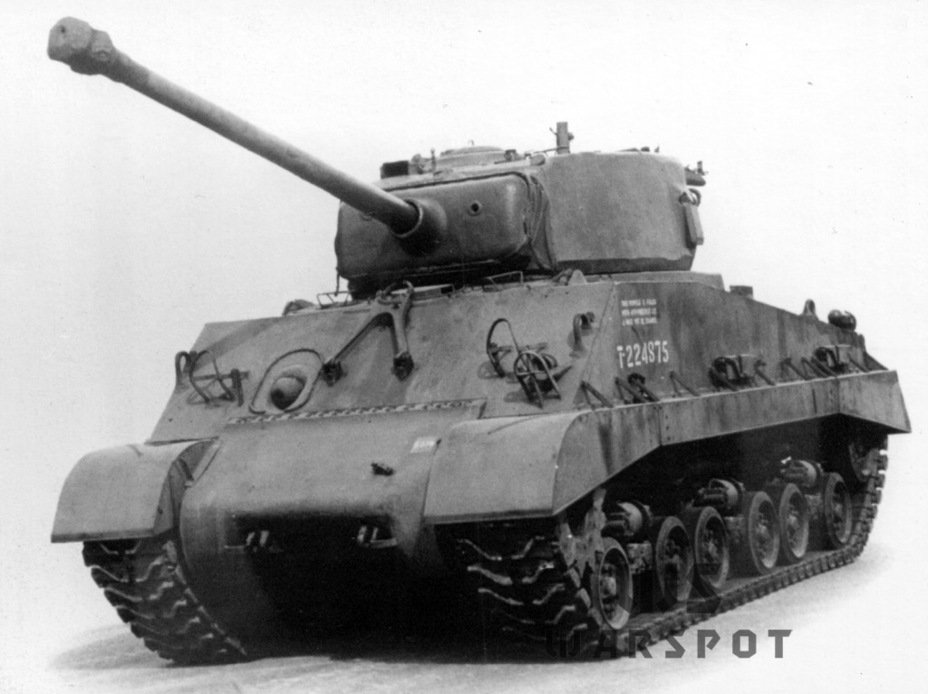
As a rule, histories of the M4A2E8 usually end here. Sometimes the key phrase that nearly all diesel tanks with 76 mm guns were sent to the USSR is added. This seems rather strange, especially since American data reports that 2095 tanks of 2915 built were sent to the USSR. In 1945, 5 tanks were sent to the UK. These were late production tanks with T80 tracks with the British loadout, including Wireless Set No.19 radios. The M4A2E8 received the designation Sherman IIIAY (A: 76 mm gun, Y: HVSS suspension).
One of these tanks survived to this day and is, perhaps, the most famous M4A2E8. Tank T.224875 was studied by the British, after which it was sent to the military academy in Shrivenham. The tank was transferred to Bovington in 1985, where it became a museum exhibit. Its tracks were recently replaced with T84 tracks used by other M4A2E8 tanks after the war. The tank became famous after the movie Fury came out, where the tank plays a main role. The American army had no M4A2E8 tanks, but it is visually similar to the M4A3E8.
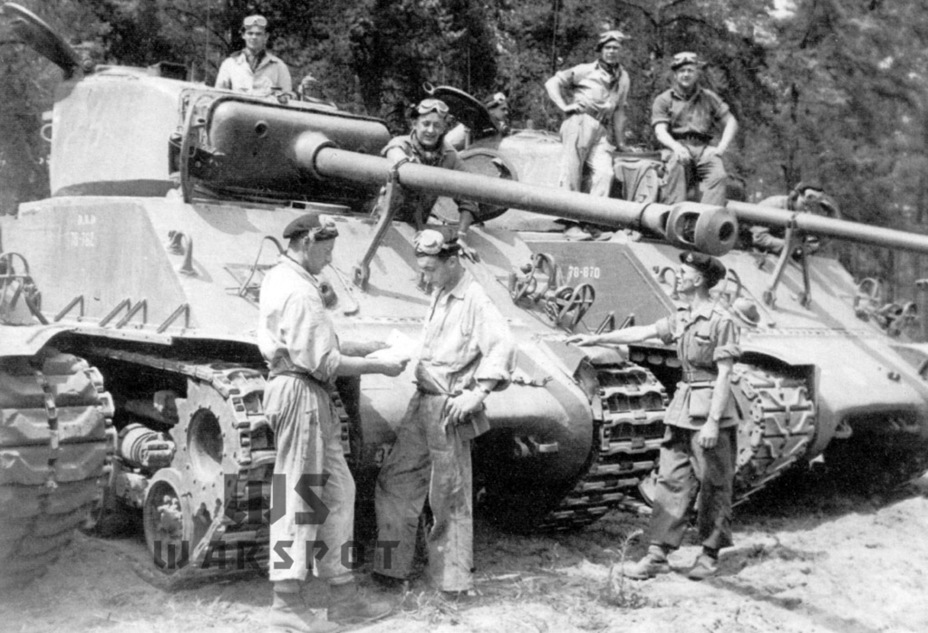
After the war, the American army was disposing of surplus vehicles. This included a number of M4A2E8 tanks that were not sent to the USSR. 294 of these tanks were sold to the Canadian army in 1946. Canada paid 1460 American dollars per tank, a ridiculously low price for such a tank. These tanks were only used for training, and the Canadians only fought in M4A3E8 tanks in Korea.
Canadian M4A2E8 tanks led a long life, staying as training tanks until 1972. More than 50 M4A2E8 tanks survive to this day, many of which are still in running order.
Translated by Peter Samsonov. Read more interesting tank articles on his blog Tank Archives.
Sources:
- Central Archives of the Russian Ministry of Defence;
- National Archives and Records Administration;
- Russian State Archive of Film and Photo Documents;
- Gennady Petrov's archive;
- M4A2 Sherman Part 2 — Armour Photo Gallery No. 16, Wojciech J. Gawrych, Model Centrum Progres, 2007, ISBN 978-8360672013.






